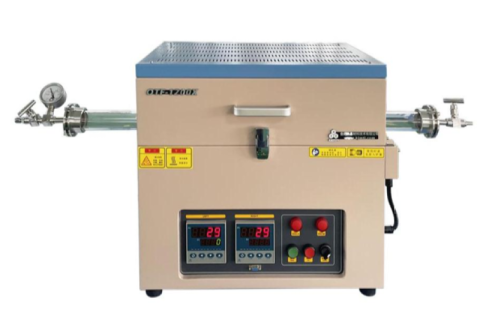
- Home
- >
- News
- >
- Industry News
- >
News
Mastering the standardized operation of the gas atmosphere control and valve operation of the three zone high temperature tube furnace is very important to ensure the safety of the equipment and the reliability of the experiment. In this article, I will combine the characteristics of the equipment to introduce you to the main precautions.
Working principle of dual heating zone tube furnace is not simple power-on heating, but through the coordination of heating system, temperature control system, atmosphere control system and structural adaptation design, the whole process management from temperature control to environmental protection is realized, and it provides a reliable high temperature environment for experiments and production.
The use of tube furnace is not limited to a single high-temperature heating, but revolves around material preparation, modification, and testing under precise temperature control, covering the whole process from laboratory small-batch research and development to industrial pilot testing, and providing stable and reliable heating environment support for technological breakthroughs in different fields.
The maximum operating temperature of open type vacuum tube furnace is 1200℃, and the maximum constant temperature gradient of the two temperature zones is 200℃. With high-purity quartz tubes and flanges, it can not only meet the temperature accuracy requirements of fine experiments, but also adapt to different batch sample processing scenarios. The application of open type vacuum tube furnace has deeply covered many fields such as new energy, semiconductor, ceramics, and scientific research in universities.
For B-end buyers in the fields of material research and development and semiconductor manufacturing, mastering the standardized operation of small vacuum tube furnace can ensure experimental safety, data repeatability and equipment life.
The working principle of plasma arc melting furnace is to ionize inert gas through a plasma generator to form a high-temperature plasma arc, and use the concentrated energy released by the plasma arc to achieve rapid melting and refining of refractory materials. Our SP-MSM20-9 small plasma arc melting furnace is optimized on the basis of this principle.
Dual heating zone split tube furnace divides the heating tube body into two independent heating areas, each area is equipped with a dedicated heating element and temperature control system, which realizes the precise operation of one zone and one control.
Flatbed coating machine is an automated equipment that uses precision mechanical structure and intelligent procedures to evenly coat liquid pastes and coating materials on the surface of rigid or flexible substrates, and cooperates with subsequent processes such as drying and curing to form a uniform film.
The maximum temperature of our high efficiency box furnace can reach 1200℃, which can meet the needs of long-term operation.
This gives small box furnace a certain advantage in some applications with strict temperature requirements, such as annealing of high melting point metals.
Our small box furnace uses a double-shell structure, with PID programmable temperature control and type B thermocouple, the temperature control accuracy can reach ±1°C.












